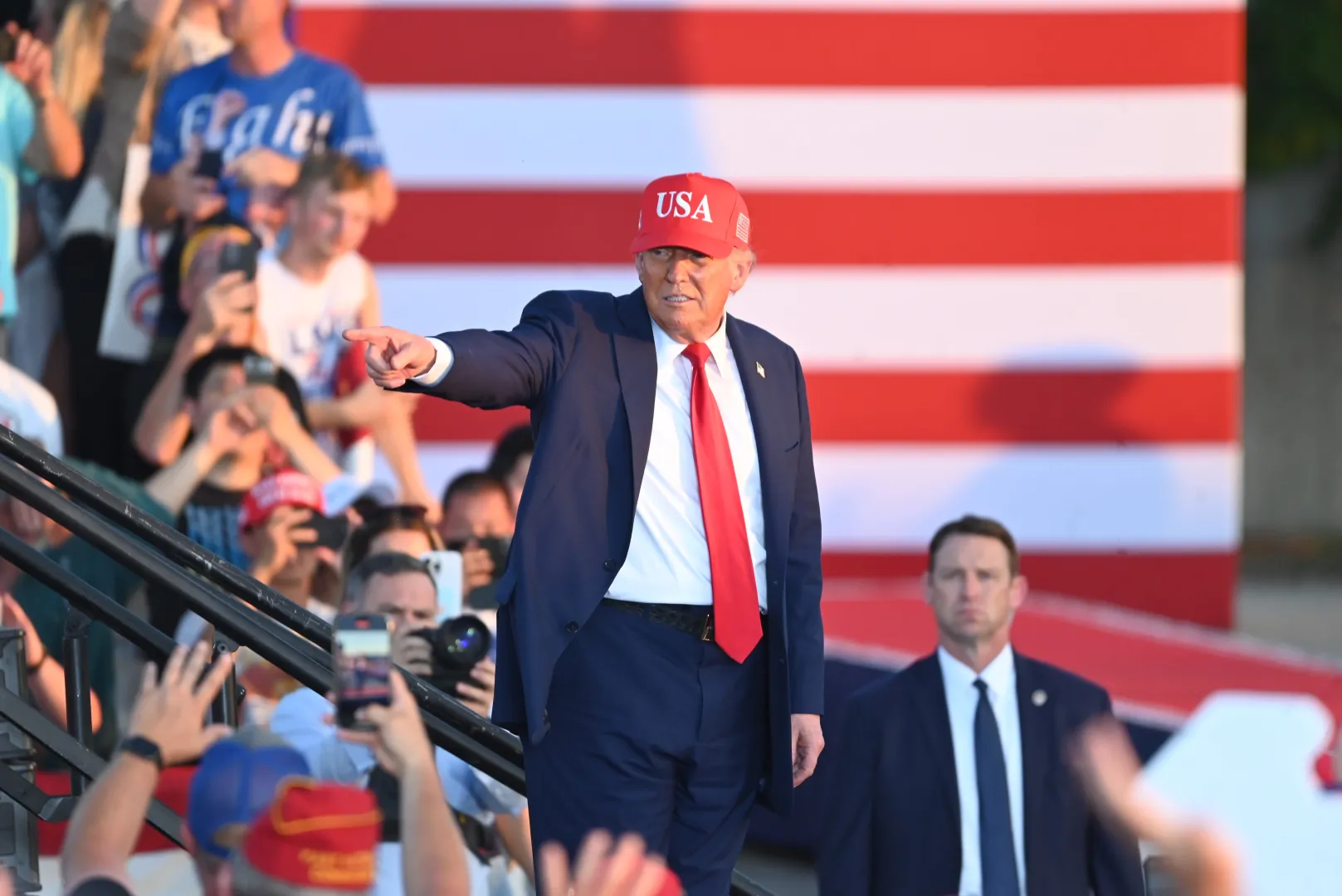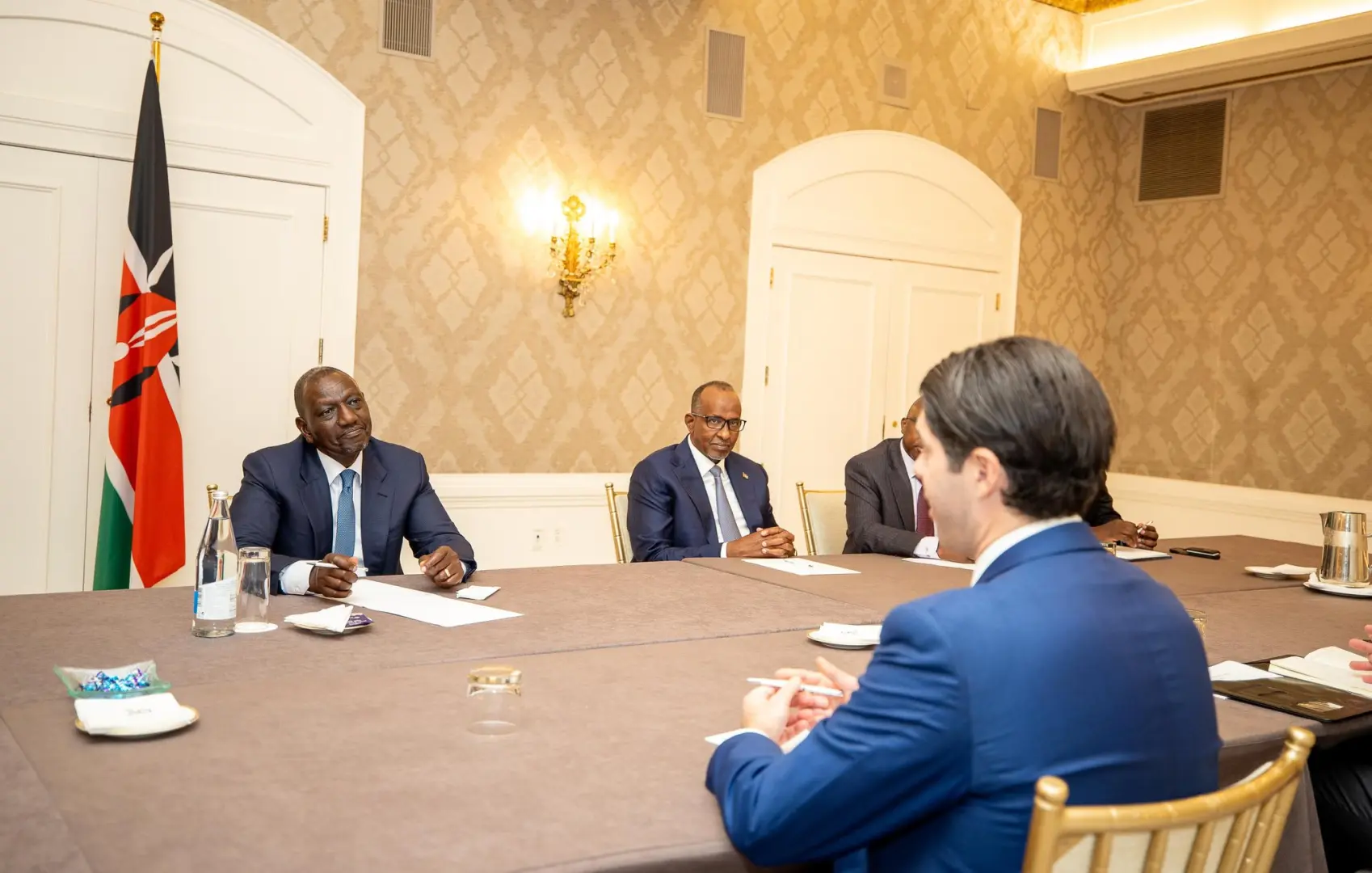President Donald Trump has once again sent shockwaves through the global economic and geopolitical landscape, announcing on Tuesday that the United States would “pretty soon” impose a 10% tariff on imports from all BRICS nations. This declaration, made just days after Brazil hosted the bloc’s annual summit in Rio de Janeiro, immediately drew sharp criticism from Brazilian President Luiz Inácio Lula da Silva, highlighting the escalating tensions between the West and a rapidly expanding group of emerging economies.
Trump’s tariff threat, initially hinted at on Sunday and reaffirmed during a cabinet meeting at the White House, underscores his enduring “America First” trade philosophy. He explicitly stated, “Anybody that’s in BRICS is getting a 10% charge pretty soon… If they’re a member of BRICS, they’re going to have to pay a 10% tariff… and they won’t be a member for long.” This aggressive stance not only targets the economic ties of these nations but also challenges the very legitimacy and purpose of the BRICS bloc, which Trump controversially claimed was “set up to degenerate our dollar and take our dollar… take it off as the standard.”
The BRICS group, which expanded significantly last year beyond its founding members – Brazil, Russia, India, China, and South Africa – to include nations such as Iran and Indonesia, has increasingly positioned itself as a counterweight to Western-dominated global institutions. Leaders at the recent summit voiced indirect but pointed criticism of U.S. military and trade policies, setting the stage for Trump’s retaliatory remarks. This latest development signals a deepening rift in international relations, with profound implications for global trade, currency dynamics, and the pursuit of a multipolar world order.
Trump’s “America First” Revisited: The Tariff as a Weapon
Donald Trump’s trade philosophy is deeply rooted in his “America First” doctrine, a nationalist approach that prioritizes domestic industries and jobs over globalist trade agreements. Throughout his presidency, and now in his potential return to power, Trump has consistently advocated for the use of tariffs as a primary tool to achieve his economic objectives. His core belief is that tariffs – taxes imposed on imported goods – can force foreign countries to alter their trade practices, reduce trade deficits, and incentivize domestic production.
During his previous term, Trump famously imposed tariffs on steel and aluminum imports from various countries, citing national security concerns. He also initiated a comprehensive trade war with China, levying tariffs on hundreds of billions of dollars worth of Chinese goods. His rationale was that these tariffs would compel China to address what he viewed as unfair trade practices, intellectual property theft, and forced technology transfers. While proponents argued these measures protected American industries and workers, critics contended they raised costs for consumers, harmed U.S. exporters, and disrupted global supply chains.
The proposed 10% tariff on all imports from BRICS countries represents an escalation of this protectionist strategy. Unlike previous tariffs that targeted specific products or countries based on perceived unfair practices, this blanket tariff targets an entire geopolitical and economic bloc. Trump’s explicit reasoning – that BRICS was “set up to hurt the United States and the U.S. dollar’s role as the world’s reserve currency” – reveals a broader strategic intent beyond mere trade imbalances. It frames the tariff as a defensive measure against a perceived geopolitical threat to American economic supremacy.
Economically, tariffs are a double-edged sword. While they can make imported goods more expensive, potentially boosting demand for domestically produced alternatives, they also increase costs for businesses that rely on imported components or raw materials. These increased costs are often passed on to consumers in the form of higher prices, leading to inflation. Furthermore, tariffs frequently invite retaliatory measures from affected countries, sparking trade wars that can reduce global trade volumes, harm export-oriented industries, and create significant uncertainty for international businesses and investors. For instance, the U.S.-China trade war led to significant disruptions in global supply chains and affected various sectors, from agriculture to technology. A study on the dynamic impacts of a 2025 trade war across US states and the global economy further illustrates these complex effects.
The 10% tariff, if implemented, could disproportionately impact U.S. industries that import heavily from BRICS nations, such as manufacturing, automotive, and consumer goods. It could also lead to higher prices for a wide range of products, affecting American households. Moreover, it risks alienating key trading partners and accelerating the very de-dollarization efforts Trump claims to be fighting against, as countries seek to reduce their reliance on the U.S. financial system to avoid such punitive measures.
The BRICS Bloc: A Rising Multipolar Force
The BRICS acronym was originally coined in 2001 by Goldman Sachs economist Jim O’Neill to describe the rapidly growing economies of Brazil, Russia, India, and China, which he predicted would collectively dominate the global economy by 2050. South Africa joined in 2010, transforming “BRIC” into “BRICS.” Initially conceived as an economic grouping focused on fostering trade, investment, and development among its members, the bloc has evolved into a significant geopolitical entity aiming to represent the interests of the Global South and promote a more multipolar world order.
Recent Expansion and Growing Influence
The BRICS group underwent its most significant expansion in its history last year. While the initial prompt mentions Iran and Indonesia, it’s important to note that the 2023 expansion officially invited Argentina (which later withdrew), Egypt, Ethiopia, Iran, Saudi Arabia, and the United Arab Emirates to join from January 1, 2024. Indonesia was a strong candidate but ultimately did not join in that specific round. Regardless of the exact composition, this expansion significantly broadened the bloc’s geographical reach, economic power, and demographic footprint. For more details on the current composition, refer to the official BRICS website.
With these new members, BRICS now represents an even larger share of the world’s population, landmass, and economic output. This expansion is a clear signal of the bloc’s ambition to increase its global influence and provide an alternative platform for international cooperation, distinct from traditional Western-led forums like the G7. The new members bring diverse economic strengths, strategic locations, and diplomatic weight, enhancing BRICS’s collective bargaining power on issues ranging from climate change to global financial governance.
BRICS’s Goals and Agenda
The core objectives of the BRICS bloc extend beyond mere economic cooperation. They include:
- Promoting a Multipolar World Order: Challenging the unipolar dominance of the United States and advocating for a more balanced international system where multiple centers of power coexist.
- Increasing South-South Cooperation: Fostering trade, investment, and technological exchange among developing nations, reducing their reliance on developed economies.
- Reforming Global Governance: Pushing for reforms in international institutions like the United Nations, the International Monetary Fund (IMF), and the World Bank to give greater voice and representation to developing countries.
- Reducing Reliance on Western Currencies: Exploring mechanisms to facilitate trade in local currencies and developing alternative payment systems to reduce dependence on the U.S. dollar. This is a key aspect of the “de-dollarization” agenda.
- Addressing Global Challenges: Collaborating on issues such as climate change, food security, energy security, and sustainable development.
At the recent BRICS summit in Rio de Janeiro, leaders collectively voiced indirect but unmistakable criticism of U.S. military and trade policies. While not naming the U.S. directly, the joint declaration and individual statements emphasized the importance of multilateralism, sovereignty, and non-interference in internal affairs. Brazilian President Lula’s assertion that “the world does not want an emperor” was a thinly veiled rebuke of perceived American unilateralism and its assertive foreign policy. This collective stance underscores a growing desire among these nations to assert their autonomy and shape a global order that better reflects their interests and values. For more on Brazil’s 2025 BRICS presidency and its goals, see this report from the Friedrich Naumann Foundation.
The Dollar’s Dominance Under Threat? De-Dollarization Efforts
At the heart of Donald Trump’s concern about BRICS is the perceived threat to the U.S. dollar’s role as the world’s primary reserve currency. The U.S. dollar has held this dominant position for decades, serving as the primary currency for international trade, a safe haven asset during times of global instability, and the preferred currency for central banks’ foreign exchange reserves. This status confers immense economic and geopolitical benefits upon the United States, often referred to as “exorbitant privilege,” including lower borrowing costs, enhanced financial flexibility, and significant leverage in international affairs through its control over the global financial system. For a general understanding of a reserve currency, refer to this explanation.
BRICS’s De-Dollarization Agenda
For years, BRICS nations have expressed a desire to reduce their reliance on the U.S. dollar, a movement often termed “de-dollarization.” This ambition is driven by several factors:
- Vulnerability to U.S. Sanctions: The dollar’s dominance means that the U.S. can effectively weaponize its currency through sanctions, cutting off countries or entities from the global financial system. Nations like Russia and Iran, both BRICS members, have experienced the impact of such sanctions firsthand, spurring their desire for alternatives.
- Currency Volatility: Emerging economies are often subject to the whims of global dollar strength, which can lead to currency volatility and economic instability.
- Promoting Multipolarity: Reducing dollar dependence is seen as a crucial step towards a more multipolar world, diminishing the U.S.’s financial hegemony.
To achieve this, BRICS countries have been exploring various initiatives:
- Promoting Local Currency Trade: Encouraging bilateral trade settlements in national currencies rather than the dollar. For example, China has been pushing for increased use of the yuan in trade with its partners, and India has explored rupee-denominated trade agreements.
- Developing Alternative Payment Systems: The BRICS New Development Bank (NDB), often seen as an alternative to the World Bank and IMF, aims to finance infrastructure and sustainable development projects in member states. While it still operates largely in dollars, there’s a long-term vision to increase local currency financing. Furthermore, discussions around a common BRICS payment system or a shared digital currency have been ongoing, though concrete progress is slow.
- Increasing Non-Dollar Reserves: Central banks in BRICS nations have been gradually diversifying their foreign exchange reserves away from the dollar, increasing holdings of other major currencies and gold.
Despite these efforts, the path to significant de-dollarization is fraught with immense challenges. The dollar’s dominance is underpinned by deep, liquid, and transparent financial markets, a robust legal framework, and widespread trust. No other currency currently possesses the scale, liquidity, and global acceptance to truly displace the dollar as the world’s primary reserve currency. Even the Chinese yuan, while growing in international use, faces significant hurdles due to China’s capital controls and lack of full convertibility.
It is important to note the nuance regarding Brazil’s stance on a common currency. Brazil, during its presidency year in February, “nixed plans for a common currency agenda.” This indicates that while the broader de-dollarization discussion is alive within BRICS, the immediate practicalities and political complexities of establishing a common currency similar to the Euro are not currently a priority for all members, particularly Brazil. This pragmatic approach reflects the diverse economic interests and priorities within the bloc. This was also mentioned in a Times of India report on the BRICS 2025 summit.
Trump’s strong reaction to the de-dollarization narrative underscores the strategic importance the U.S. places on the dollar’s reserve currency status. His statement that losing this role would be “like losing a war, a major world war. We would not be the same country any longer,” highlights the perceived existential threat to American power and prosperity. This perspective fuels his aggressive stance against any perceived challenge to the dollar’s hegemony.
Brazil’s Diplomatic Balancing Act: Lula’s Stance
Brazil, under the leadership of President Luiz Inácio Lula da Silva, finds itself in a delicate diplomatic position, navigating complex relationships with both the United States and China, while simultaneously championing the BRICS agenda. Lula’s response to Trump’s tariff threat was immediate and unequivocal, reflecting Brazil’s growing assertiveness on the global stage.
Asked about Trump’s tariff threat, Lula told journalists at the BRICS summit on Monday that “the world does not want an emperor.” This powerful metaphor, reiterated after a state visit from Indian Prime Minister Narendra Modi, directly challenges the notion of a single global hegemon dictating terms to other nations. On Tuesday, he further expressed his disagreement, stating, “We will not accept any complaints about the BRICS summit. We do not agree with the U.S. president insinuating he’s going to put tariffs on BRICS countries.” Lula’s firm rejection of Trump’s rhetoric signals Brazil’s commitment to multilateralism and its refusal to be intimidated by protectionist measures.
Brazil’s role within BRICS is pivotal. As a founding member and the largest economy in Latin America, Brazil brings significant agricultural power, a large domestic market, and a strong voice for developing nations. Under Lula, Brazil has actively sought to strengthen South-South cooperation and diversify its international partnerships, reducing its historical dependence on Western powers.
However, Brazil’s relationship with the U.S. remains crucial. The United States is Brazil’s second-largest trading partner, and a significant source of foreign direct investment. This economic interdependence means that Brazil cannot simply disregard U.S. concerns or policies. Conversely, China has become Brazil’s largest trading partner and a major investor, particularly in infrastructure and commodities. This dual economic reliance necessitates a careful balancing act.
Lula’s diplomatic strategy, often characterized by pragmatism and a focus on national development, seeks to maximize Brazil’s economic benefits from both global powers without becoming overly aligned with either. This was evident in Brazil’s approach to Chinese investment, as highlighted in previous news. While Brazil welcomes Chinese financing and technological cooperation, it has meticulously avoided formal participation in Beijing’s Belt and Road Initiative (BRI). This “tiptoeing” allows Brazil to access much-needed capital and expertise while sidestepping the geopolitical controversies and potential debt concerns often associated with the BRI, thereby avoiding open provocation of the U.S.
The current situation with Trump’s tariff threat puts this balancing act to the test. Brazil must defend its economic interests and its sovereign right to engage with other nations through blocs like BRICS, while also preserving its vital trade relationship with the U.S. Lula’s strong public statements are a clear indication that Brazil will not passively accept unilateral economic coercion.
Economic and Geopolitical Implications: A Shifting Global Order
The prospect of a 10% tariff on imports from BRICS nations carries far-reaching economic and geopolitical implications, potentially accelerating a global realignment already underway.
Impact on Global Trade and Supply Chains
If implemented, a blanket tariff on BRICS imports would significantly disrupt global trade flows. Businesses in the U.S. that source goods from BRICS countries would face increased costs, which would either erode their profit margins or be passed on to American consumers, fueling inflation. This could lead to a scramble for alternative suppliers, potentially shifting supply chains away from BRICS nations, but at the cost of efficiency and established relationships.
Furthermore, such tariffs would almost certainly invite retaliatory measures from BRICS members. China, a major trading partner for the U.S., has a proven track record of responding in kind to tariffs, often targeting specific U.S. agricultural products or manufactured goods. Brazil, India, and South Africa could also impose their own tariffs or non-tariff barriers on American products, leading to a tit-for-tat escalation that harms global trade volumes and creates significant uncertainty for multinational corporations. This could lead to a fragmentation of the global economy into competing trade blocs, undermining the principles of free trade and open markets.
Acceleration of Geopolitical Realignment
Beyond economics, the tariff threat could accelerate the shift towards a more multipolar world. By explicitly targeting BRICS, Trump’s policy effectively pushes these nations closer together, reinforcing their collective identity and shared interest in challenging U.S. dominance. It strengthens the narrative that the U.S. is an unreliable partner, prone to unilateral actions, thereby validating the BRICS mission to build alternative institutions and foster South-South cooperation.
The move could also embolden other nations in the Global South to align more closely with BRICS or similar blocs that advocate for a more equitable global order. It could lead to increased diplomatic and economic cooperation among non-Western powers, further diluting the influence of traditional alliances. The tariff threat thus becomes a catalyst for geopolitical realignment, potentially leading to a more fragmented and competitive international system.
Investment Climate and Capital Flows
Uncertainty is anathema to investors. The threat of tariffs creates significant uncertainty for businesses engaged in international trade and investment. Companies with operations or supply chains spanning the U.S. and BRICS nations would face increased risks and costs, potentially leading to a reduction in cross-border investment. This could manifest as capital flight from affected regions, as investors seek safer havens or less volatile markets.
For BRICS nations, while the tariffs pose an immediate challenge, they could also serve as a spur for greater domestic production, regional trade, and diversification away from U.S. markets. This could lead to increased intra-BRICS investment and the strengthening of regional supply chains, further contributing to the multipolar economic landscape.
Conclusion: A Defining Moment for Global Relations
Donald Trump’s proposed 10% tariff on BRICS nations is more than just a trade policy; it is a declaration of intent that underscores a fundamental tension in the evolving global order. It reflects a deep-seated concern within certain U.S. political circles about the rise of alternative power centers and the perceived threat to American economic and geopolitical supremacy.
For the BRICS bloc, this tariff threat serves as both a challenge and a validation. It reinforces their collective resolve to pursue a more multipolar world and to reduce their vulnerability to unilateral actions from established powers. While the economic impact of such tariffs would be significant, they could also galvanize BRICS nations to deepen their cooperation, accelerate de-dollarization efforts, and strengthen their own economic and financial institutions.
The coming months will reveal the true extent of these proposed tariffs and the nature of the international response. However, one thing is clear: the global economic and geopolitical landscape is undergoing a profound transformation. The confrontation between Trump’s “America First” doctrine and the BRICS’s multipolar ambitions is a defining moment, shaping the future of international trade, currency dynamics, and the very structure of global power. The world is indeed watching to see whether cooperation or confrontation will ultimately prevail.
Ready to take your career to the next level? Join our dynamic courses: ACCA, HESI A2, ATI TEAS 7 , HESI EXIT , NCLEX – RN and NCLEX – PN, Financial Literacy!🌟 Dive into a world of opportunities and empower yourself for success. Explore more at Serrari Ed and start your exciting journey today! ✨
photo source: Google
By: Montel Kamau
Serrari Financial Analyst
10th July, 2025
Article, Financial and News Disclaimer
The Value of a Financial Advisor
While this article offers valuable insights, it is essential to recognize that personal finance can be highly complex and unique to each individual. A financial advisor provides professional expertise and personalized guidance to help you make well-informed decisions tailored to your specific circumstances and goals.
Beyond offering knowledge, a financial advisor serves as a trusted partner to help you stay disciplined, avoid common pitfalls, and remain focused on your long-term objectives. Their perspective and experience can complement your own efforts, enhancing your financial well-being and ensuring a more confident approach to managing your finances.
Disclaimer: This article is for informational purposes only and does not constitute financial advice. Readers are encouraged to consult a licensed financial advisor to obtain guidance specific to their financial situation.
Article and News Disclaimer
The information provided on www.serrarigroup.com is for general informational purposes only. While we strive to keep the information up to date and accurate, we make no representations or warranties of any kind, express or implied, about the completeness, accuracy, reliability, suitability, or availability with respect to the website or the information, products, services, or related graphics contained on the website for any purpose. Any reliance you place on such information is therefore strictly at your own risk.
www.serrarigroup.com is not responsible for any errors or omissions, or for the results obtained from the use of this information. All information on the website is provided on an as-is basis, with no guarantee of completeness, accuracy, timeliness, or of the results obtained from the use of this information, and without warranty of any kind, express or implied, including but not limited to warranties of performance, merchantability, and fitness for a particular purpose.
In no event will www.serrarigroup.com be liable to you or anyone else for any decision made or action taken in reliance on the information provided on the website or for any consequential, special, or similar damages, even if advised of the possibility of such damages.
The articles, news, and information presented on www.serrarigroup.com reflect the opinions of the respective authors and contributors and do not necessarily represent the views of the website or its management. Any views or opinions expressed are solely those of the individual authors and do not represent the website's views or opinions as a whole.
The content on www.serrarigroup.com may include links to external websites, which are provided for convenience and informational purposes only. We have no control over the nature, content, and availability of those sites. The inclusion of any links does not necessarily imply a recommendation or endorsement of the views expressed within them.
Every effort is made to keep the website up and running smoothly. However, www.serrarigroup.com takes no responsibility for, and will not be liable for, the website being temporarily unavailable due to technical issues beyond our control.
Please note that laws, regulations, and information can change rapidly, and we advise you to conduct further research and seek professional advice when necessary.
By using www.serrarigroup.com, you agree to this disclaimer and its terms. If you do not agree with this disclaimer, please do not use the website.
www.serrarigroup.com, reserves the right to update, modify, or remove any part of this disclaimer without prior notice. It is your responsibility to review this disclaimer periodically for changes.
Serrari Group 2025












